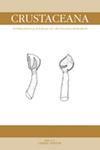The impact of an abiotic variable, temperature, on larvae of the blue crab, Callinectes sapidus Rathbun, 1896 (Brachyura, Portunidae)
IF 0.6
4区 生物学
Q4 MARINE & FRESHWATER BIOLOGY
引用次数: 0
Abstract
Reductions in the size of mature blue crabs, Callinectes sapidus, which are commercially harvested, are of concern to the aquaculture industry. Through their role in the production of viable offspring, aquaculturists focus their attention in particular on female crabs, although the phenomenon will, of course, also affect the males. Meanwhile, decreases in size at maturity throughout the crab population may be the result of temperature alterations, at present also due to global climate change. Temperature-based shifts in growth can lead to changes in reproductive efficiency, as well as in size and age at maturity. In this study, the effects of temperature on the moulting frequency of blue crabs were investigated and survival rates have been calculated. The purpose of this study was to investigate the temperature dependence of survival and of the moulting processes for blue crab larvae, and to determine the effect of increasing temperature on moulting. The stages from zoea-1 to zoea-5 were examined at 16, 22, 26 and 30°C. The results show that there is a significant difference in growth and moulting, depending on the rearing temperature. As the temperature increases, the interval between moulting days can be seen to be shortened, and increasingly so with the progress in the growth of the crabs. Moulting-interval days became less with the growth of the crabs. The effect of a rise in temperature on growth per moult is also significant, and along the temperature range tested the optimum temperature was found to be 26°C. A reduction in the length of the intermoult period was observed from the lowest to the optimum temperature, while a sudden, sharp increase in the intermoult period above 26°C was observed as well.温度这一非生物变量对青蟹幼虫的影响 Callinectes sapidus Rathbun, 1896 (Brachyura, Portunidae)
商业捕捞的成熟青蟹(Callinectes sapidus)体型的缩小引起了水产养殖业的关注。由于雌蟹在繁殖后代中的作用,水产养殖者特别关注雌蟹,当然这一现象也会影响雄蟹。同时,整个蟹群成熟时体型的减小可能是温度变化的结果,目前也是由于全球气候变化造成的。基于温度的生长变化会导致繁殖效率以及成熟时的大小和年龄发生变化。本研究调查了温度对青蟹换壳频率的影响,并计算了存活率。本研究的目的是调查青蟹幼体的存活率和蜕壳过程与温度的关系,并确定温度升高对蜕壳的影响。在 16、22、26 和 30 摄氏度条件下,对 zoea-1 至 zoea-5 阶段进行了研究。结果表明,饲养温度不同,幼虫的生长和蜕皮也有显著差异。随着温度的升高,蜕壳的间隔天数会缩短,而且随着螃蟹生长速度的加快,间隔天数会越来越短。蜕壳间隔天数随着河蟹的生长而缩短。温度升高对每次换壳的生长也有显著影响,在测试的温度范围内,发现最佳温度为 26°C。从最低温度到最适温度,观察到蜕壳间隔期缩短,而温度超过 26°C 时,观察到蜕壳间隔期突然急剧增加。
本文章由计算机程序翻译,如有差异,请以英文原文为准。
求助全文
约1分钟内获得全文
求助全文
来源期刊

Crustaceana
生物-海洋与淡水生物学
CiteScore
1.30
自引率
33.30%
发文量
52
审稿时长
3 months
期刊介绍:
Crustaceana is a leading journal in the world on crustacean research, including the latest papers from all branches of zoology. It provides up-to-date information on aspects such as taxonomy, zoogeography, ecology, physiology, anatomy, genetics, palaeontology, and biometry, and covers all groups of Crustacea. Boasting a large international circulation, Crustaceana provides its readers with an abstract for each article.
 求助内容:
求助内容: 应助结果提醒方式:
应助结果提醒方式:


